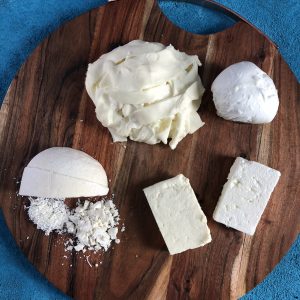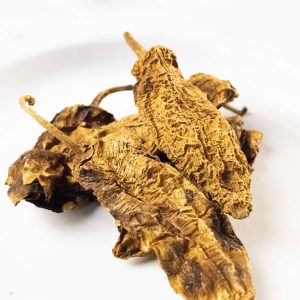Authentic Mexican Cooking: 5 Things You Need To Know
Authentic Mexican Cooking: 5 Things You Need To Know
Authentic Mexican cooking is a beautiful thing, but these days you’ll find a variety of recipes, tips & different ingredients disguised as real Mexican food. It can be hard to navigate & you might find yourself wondering ‘what is real Mexican?’
The reality is, many tips & recipes would baffle a Mexican if put in front of them. If you’re aiming to hit the authenticity nail on the head, there are a few small yet important tweaks you can make to your cooking! If you’re wondering what they are, don’t worry, we’re about to spill the frijoles & share a few things you need to know.
Celebrate Mexican cheeses & use queso Oaxaca, & other quality fresh cheeses.
Outside of Mexico, Mexican food has become synonymous with gooey, processed, yellow or orange cheese. This isn’t traditional Mexican food, but luckily Mexican cheeses are some of the best you’ll ever eat! Instead of ‘liquid cheese’ you’ll find a wide range of delicious authentic fresh cheeses like queso Oaxaca, queso fresco, requesón, panela & many more. Some of these might not be available to you outside Mexico, but you can still find authentic substitutes. For example, the Italian cheese Treccia is the best substitute for queso Oaxaca.

We’ve listed substitutes you can use for other common Mexican cheeses in another article.
Important queso tip.
When it comes to using cheese in Mexican cooking, do it sparingly. Overusing melted cheese is not something you’ll commonly find on a Mexican table, other than a few delicious exceptions like enchiladas suizas, quesadillas & gringas.
Use chillies for flavour, not just heat. Try having dried ones in your cupboard & fresh in your garden.
As with Mexican salsas, it’s a common misconception that Mexican food is always spicy. Yes, almost all Mexican food contains chillies, but these are used for flavour more so than heat. Any pro Mexican chef always has a cupboard full of dried chillies on hand, & a few fresh ones growing in the garden. Chillies are essential to achieving the unique authentic tastes in Mexican cooking & are used in marinades, salsas, soups, moles & more. We highly recommend experimenting with a variety of chillies beyond the humble jalapeño. Though the jalapeño is delicioso!
Mexico has hundreds of varieties of chillies & these are used to create a myriad of flavour combinations across thousands of dishes. The variety can be overwhelming, so remember, if in doubt, put chipotle in. Chipotle makes everything taste better!

Where to find Mexican chillies.
Dried chillies can be found at speciality grocery stores and Latino food suppliers. Common ones available in Australia include: ancho, guajillo, chile de arbol, chipotle, morita, pasilla, mulato & cascabel.
Chilli tip:
Seeds for several fresh chilli varieties are available in Australia. Be warned though, as soil conditions can affect the spiciness level on several varieties – as a rule of thumb, if you want it spicy, go easy on the fancy potting mix and nutrient-dense fertilisers. Seeds can be purchased in Australia at retailers such as Chili Mojo & Poblano Mexican.
Use traditional Mexican herbs in your beans, soups & other dishes (like epazote).
We’re not just talking about coriander (cilantro) – that’s just the tip of the iceberg when it comes to Mexican herbs. There are a few distinctive & unique herbs you can use that will take your Mexican cooking to a whole new level.
The main one you’ll want to perfect is epazote. Epazote is a wild and pungent herb that is very common in preparing black beans (such as frijoles refitos or frijoles de la olla). The taste is very distinctive and can take some getting used to, but once you’re accustomed to it you’ll struggle to eat beans without it. Frijoles, for example, just aren’t the same without epazote.
Our favourite herbs.
Epazote is not just for beans. In fact, try putting a whole epazote leaf inside a quesadilla… it is one of the simplest yet tastiest things you’ll ever eat. If you really want to impress your amigos at your next dinner party, try adding some epazote to your tortilla soup. It is amazing!
Finding epazote in Australia.
This is the tricky part. Outside of North and Central America you probably won’t find epazote at your local market. But the good news is it’s very easy & quick to grow (almost too easy – be careful it doesn’t take over your veggie garden). Seeds are available in Australia at Chili Mojo & Poblano Mexican. You can also buy epazote dried from specialty Mexican grocery stores, but fresh is always best
Other essential Mexican herbs.
Hojas de aguacarte: they’re avocado leaves, but not just any avocado leaves. They need to be from the persea drymifolia avocado tree which is a native Mexican variety. Others include hoja santa (typical of southern Mexico & the Gulf region), hierba de conejo, papalo, & many more. While we’re on the topic, if your recipe calls for oregano, make sure you use Mexican oregano. It’s similar, yet different, to the common oreganos used in Australia.
Use the right type of onions or soak them first to reduce the bitterness.
You may notice Mexicans use onions a lot, you will find them in almost everything – on top of tacos with coriander, in salsas and marinades, sliced on top of enchiladas, or just eaten whole straight from the grill. But the onions in Mexico are not exactly the same as the onions here in Australia. So if you want to get your Mexican food just right, you’ll need to know which type of onion to use.
If you’re garnishing tacos, flautas, or enchiladas, a Mexican recipe will usually call for raw white onion. However, Australian white onions tend to have a much stronger taste than Mexican ones & are generally too overpowering to put on your dish raw. Try using an Australian red onion instead. It is milder & will result in a better flavour match to its Mexican counterpart (red onions are actually very common anyway in the Yucatan cuisine of southern Mexican). If you’d prefer to use white onions, we suggest soaking your chopped onion first for about 10 minutes in cold water or lime juice to reduce the raw & bitter taste.
Brown onions in Mexican cooking.
If you’re making salsa or marinade, Australian brown onions work well as a substitute for Mexican onions. If you want to serve up ‘cebollitas de chambray’ – a Mexican BBQ favourite – you’ll need to search hard for these Mexican onions in Australia. Occasionally, they’re available at supermarkets & specialty fruit & veg shops and by the name ‘young salad onions’ or ‘fresh white onions’ or ‘pearl onions’ or ‘white globe onions’. They’re definitely not spring onions! But you can use spring onions as a substitute if you can’t find them.
Use ‘crema’ instead of sour cream.
In less traditional Mexican food, it’s common to see huge dollops of sour cream on everything. But in Mexico, you won’t come across this often (especially not on your tacos!), and when you do, it’s not sour cream. If you’re asking what the difference is: crema is less sour than sour cream, but has slightly more ‘tang’ than straight thickened cream.
The best way to replicate crema if you can’t get your hands on any is to mix sour cream and thickened cream together (half & half), with a pinch of salt, and stir it rapidly until it’s thinned out. Then drizzle it over your enchiladas, tostadas & flautas.
Congrats! Your Mexican cooking is becoming more authentic already!
Are you looking for more authentic Mexican cooking tips? See our other articles or subscribe to our updates.
We are makers of award-winning traditional corn tortillas & tortilla chips, sold Australia-wide.
Where to BuyWant more?
Love authentic Mexican? Get tips, tricks, recipes & more each month.
